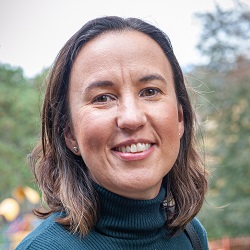
Dodd: New approach to tree-damage issues
A new specialist tree damage claims law firm will donate 10% of the fees on a matter to a carbon or biodiversity credit scheme so as to offset the carbon produced in handling it.
Tree Law, the brainchild of Sarah Dodd, was formally launched earlier this month and will be run net carbon zero. Its slogan is “creative legal solutions that won’t cost us the earth”.
It markets itself to potential clients “interested in being able to give back to the environment in the management of [their] legal claims”.
When creating a footprint in the course of the case is unavoidable, clients will have the opportunity to offset it with a “decarbonisation strategy ready for the next case”.
Ms Dodd, who lives in South Wales, trained with the NHS then worked for Eversheds for 14 years, before moving to DAC Beachcroft, where she spent six years.
While she specialises in tree damage claims and currently chairs the Subsidence Forum – an organisation of solicitors and insurance industry figures which aims to reduce the amount of time and expense spent on subsidence claims – she deals with civil disputes generally, in particular claims arising from damage to property caused by vegetation.
Speaking to Legal Futures, Ms Dodd said she was inspired “to advise clients in a more agile and innovative way” by setting up her own firm in part after attending the Legal Futures annual innovation conference.
It had been in her mind for several years, but hearing people speak meant “I thought maybe I could do this myself”.
The pandemic had shown it was possible to work from home with clients in different parts of the country. “The location no longer makes any difference.”
“My main clients before were UK household insurers. I thought they would be interested in having a conversation about using a law firm that has got a green agenda running through it.”
She said that so far she had “attracted a few local authority clients interested by that part of the offering”.
She added: “I felt the traditional law firm structure no longer aligned with my personal values.”
Ms Dodd explained that climate change and hotter, drier summers have resulted in subsidence claims moving north to parts of the UK where they had not appeared before.
In the past, the solution to tree damage was simply remove the trees near a property and perhaps plant others . Nowadays “full-scale tree removal” was frowned upon so “it’s about helping the insurers and… tree owners to work together to create a new approach”.
The world was changing fast and lawyers’ thinking had to move with it. “Oak trees, for example, house up to 2,000 different animal, plant and fungal species. So if you chop down an oak and then just replant a couple of other trees, you’re missing out on all of that… [bio]diversity.”














Leave a Comment